Polar Vantage V
We’ve been waiting for a successor to Polar’s V800 multisport watch for a while and it’s finally here in the form of the Polar Vantage V, a new multi-talented device targeted at anyone who cares about performance, from the elites down to the weekend warriors.
In addition to a snazzy new design, the headline features includes improved optical heart rate tracking that Polar claims is it’s most accurate yet.
There's also running power tracking from the wrist – this is the first watch in the world to offer this – a broad range of extensive training load and recovery monitoring features that are tailored to each individual athlete.
From serious sports tracking right down to sleep and activity, there’s a great deal packed in here and a lot to excite athletes of all levels. We got our hands on an early beta version of the Polar Vantage V and here are our first impressions.
Polar Vantage V price and release date
When it comes to price, the Polar Vantage V definitely sits at the higher end of the spectrum. The watch-only package is priced at £439 / $499 (about AU$800) while you can also buy it with a H10 chest strap – which you’ll need to unlock all of the recovery features – for £479 / $549 (about AU$870).
The on-sale date is yet to be confirmed but we can certainly expect it in the last quarter of 2018.
Polar Vantage V design
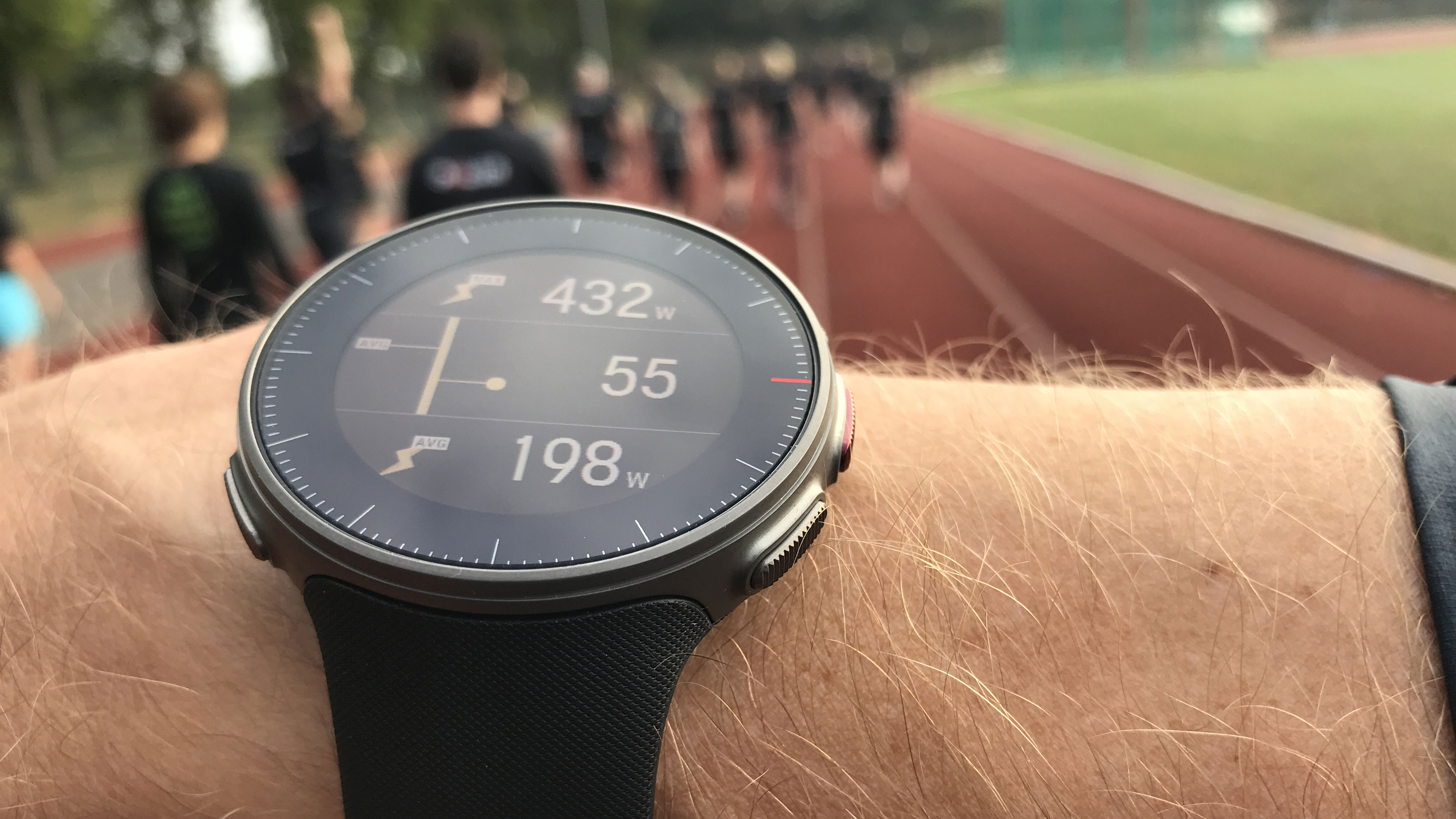
The first thing you notice when you pick up the new Polar Vantage V is how much more subtle and sophisticated the design is compared to its blockier, rectangular-faced predecessor the Polar V800. We’d go as far as to say this is Polar’s best looking watch ever.
What you’ve got here is a watch that you can wear all day without screaming to the world ‘I’m an IronMan competitor.’ Much of this is down to the fact the Polar Vantage V has a more traditional round watch face that’s complemented by a thin sleek stainless steel bezel and frame that surrounds a sharp touchscreen color display.
In our very early runs with the Vantage V we found the touchscreen to be a little laggy on occasion, it didn’t always scroll with each swipe. Though it’s important to point out that we were using a beta version of the software on the watch and were told to expect some issues that will be ironed out before the full launch.
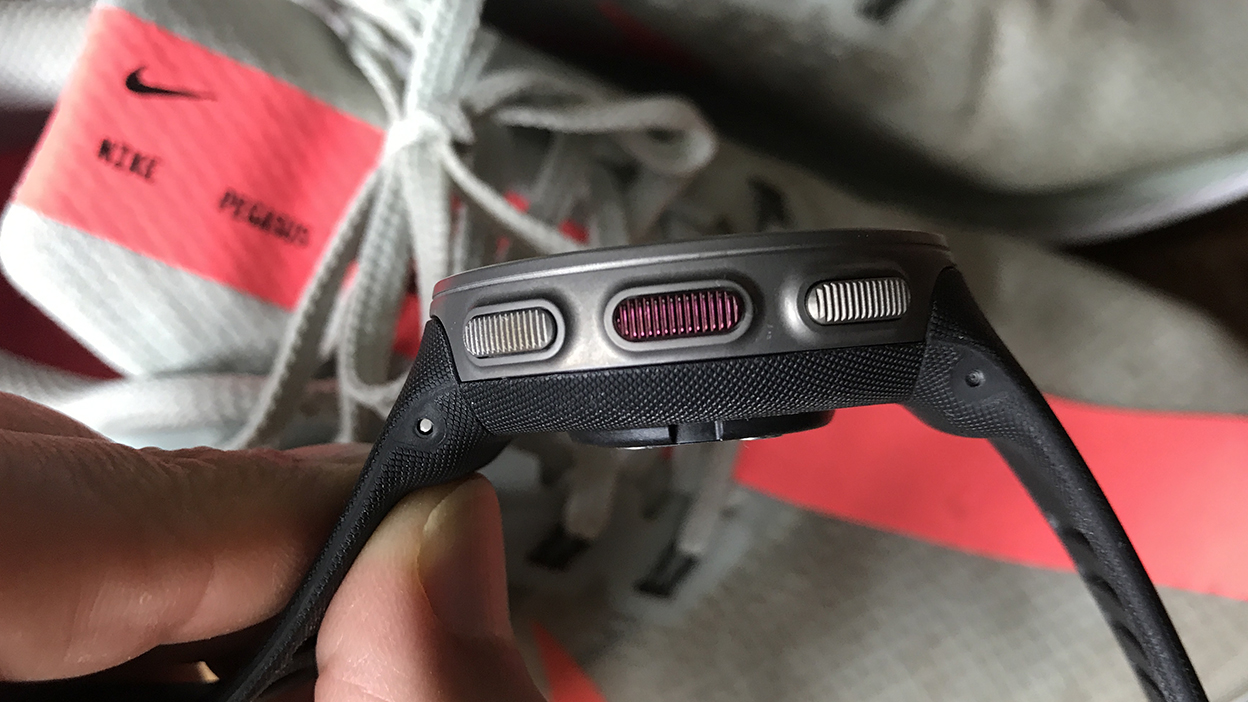
There are five subtle, textured stainless steel side buttons that give a second way to navigate the watch, which we found particularly useful on the move.
At 66g it’s 13g lighter than the V800 and something like the Garmin Fenix 5 Plus that comes in around 86g. When it comes to all-day wear and even sleep tracking overnight this is likely to be a huge improvement.
The same goes for the silicone strap which is softer, more flexible and more comfortable than those we’ve had on previous Polar devices. Out of the box the Vantage V is design to fit medium and large wrists with 22 well-spaced notches that should accommodate most wrists.
However, those with small wrists have been penalized somewhat as they’ll have to purchase a small size wrist band separately for $9.90 (about $7.50, AU$14).
The watch itself is 46mm wide and 13mm thick, the latter due to quite a pronounced optical heart rate bump that we’re told is necessary for the best skin contact and delivering the most accurate optical heart rate readings.
On the back you’ll also notice there are 9 optical LEDs in two colors (4 red and 5 green) as well as four bio-impedance sensors that detect when there’s good skin contact for taking the heart rate readings.
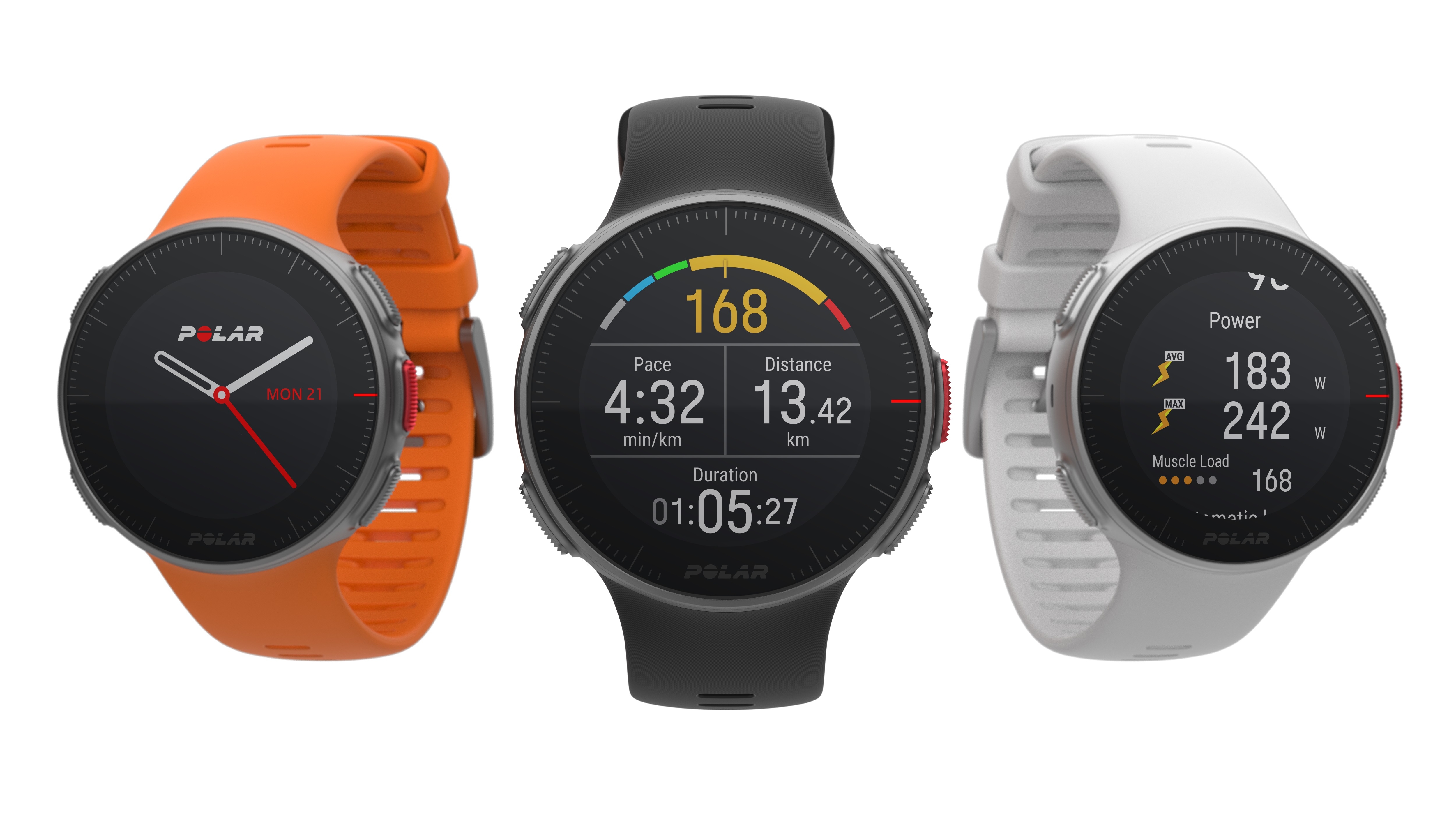
These four electrodes are also used to charge the watch in conjunction with a round USB cradle dock.
As you’d expect from a multisport watch, the Vantage V is waterproof. The Polar Vantage V comes in three familiar Polar colors, black white and orange.
Polar Vantage V features
Let’s start with the basics. The Polar Vantage V supports 130 different sports with individual sport profiles and algorithms to track each sport.
As you’d expect running, swimming and cycling feature prominently, and there’s a dedicated triathlon mode but there’s also everything from crossfit and strength training to hiking and mountain biking.
We didn’t get the chance to test all of these but we’re told that Polar has worked hard to tailor the algorithms for each sport allow for more accurate heart rate readings.
Improved optical heart rate?
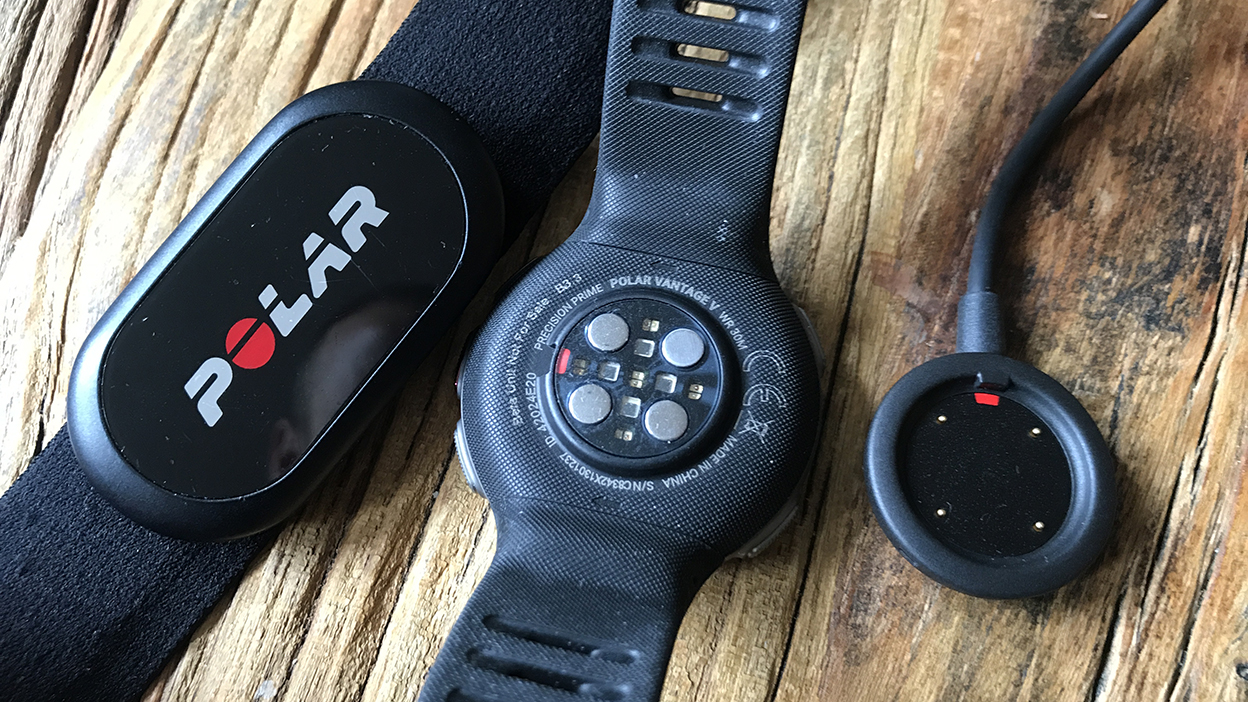
Speaking of heart rate, one of the Vantage V’s big claims is that it’s the most accurate wrist-based optical heart rate watch on the market, thanks to what Polar calls its Precision Prime sensor fusion technology.
This combines optical heart rate measurement tracked with 9 LEDs in two colors that can reach deeper into the tissue, with 3D acceleration data that and skin contact measurement that recognizes when losses in readings might be attributed to movement or the loss of contact – not the fact your heart suddenly stopped.
It has also introduced the ability for post-workout cleaning of the heart rate data whereby it identifies anomalies in the data retrospectively and adjust your stats in the Polar Flow and and web tools to give a truer picture of your data during a session.
We tested the heart rate on one run against the Garmin Fenix 5 Plus optical heart rate and our average heart rate was 103BPM on the Garmin versus 108BPM on the Vantage V while our max on Garmin only hit 141BPM against a 168BPM on the Polar. Based on the session we did, which involved two sets of 600m all out, we’d suggest the latter feels more accurate against our perceived effort.
For swimmers, the Polar Vantage V’s optical heart rate will track your BPM in the water while there’s also GPS-support for open water swimming.
Running power
Perhaps the biggest headline will go to the fact that the Polar Vantage V is the first watch to offer running power tracking from the wrist. We’ve seen footpods such as the Stryd sensors offering power tracking for a while but this is the first time you can do it with a watch.
Long used in cycling as a more consistent way to measure the true output and workrate of an athlete, power will be a new metric to many runners. Measured in Watts, in a nutshell it offers a new way to track performance that’s more useful than heart rate or pace alone.
Why? Well whereas heart rate is affected by many external factors such as stress, sleep, caffeine – and has a lag during workouts – power responds in real time. Whereas pace as a metric is difficult to use if you’re running on hilly or mixed terrain, power can be used to provide a consistent effort level.
Polar’s power is based on an algorithm that takes readings from the built-in barometer and GPS speed to estimate your power output. In our very brief test where we also ran with the Stryd power footpod for comparison, Polar’s power was often up to 100 watts higher than the Stryd sensor.
Stryd put our average power for the session at 159.5 watts compared to the Vantage V at 196 watts. Stryd had our max power as 494 watts compared to Polar’s 698 watts.
Training Load Pro and Recovery Load Pro
When you’re done training, the Polar Vantage V has a suite of tools to help you assess the impact that session has had on your fitness and when it’s time to go again.
Training Load Pro now gives you individual readings for the different types of load you might put on your body during training. This includes muscular load, perceived load and cardiovascular to give you one, holistic view of training load. You can also see at a glance how hard your session was in comparison to the average of your sessions from the past 90 days.
In terms of recovery, the Vantage V analyses your recent training data and will tell you whether today is a good day to train hard or whether you might consider backing off and do a lighter session.
To unlock all of the Recovery Pro features you need to do an orthostatic test at least three times a week and that means using a Polar H10 chest strap as this is only accurate way to take the necessary Heart Rate Variability readings needed.
There are also two new readings Strain – which roughly equates to fatigue – and Tolerance – which looks at the average training load over the past 28 days. What’s really strong here is that the V doesn’t just give you the numbers, it interprets them and makes recommendations on how to respond. For example, if the ratio between strain and tolerance goes above 1.5 that’s when you’re at higher risk of injury and the V might suggest taking a rest day.
Monitoring training load and recovery isn’t new but first impressions of what Polar offers in the Vantage V is that this takes it to a new level, particularly because it separates out the different types of load and partly because you get proper advice on what to do with that data.
Battery life
Finally there’s the ultra long battery life that Polar claims will offer 40 hours of continuous training using the optical heart rate and GPS tracking. We’ll be sure to put this to the test fully in our full review.
Early verdict
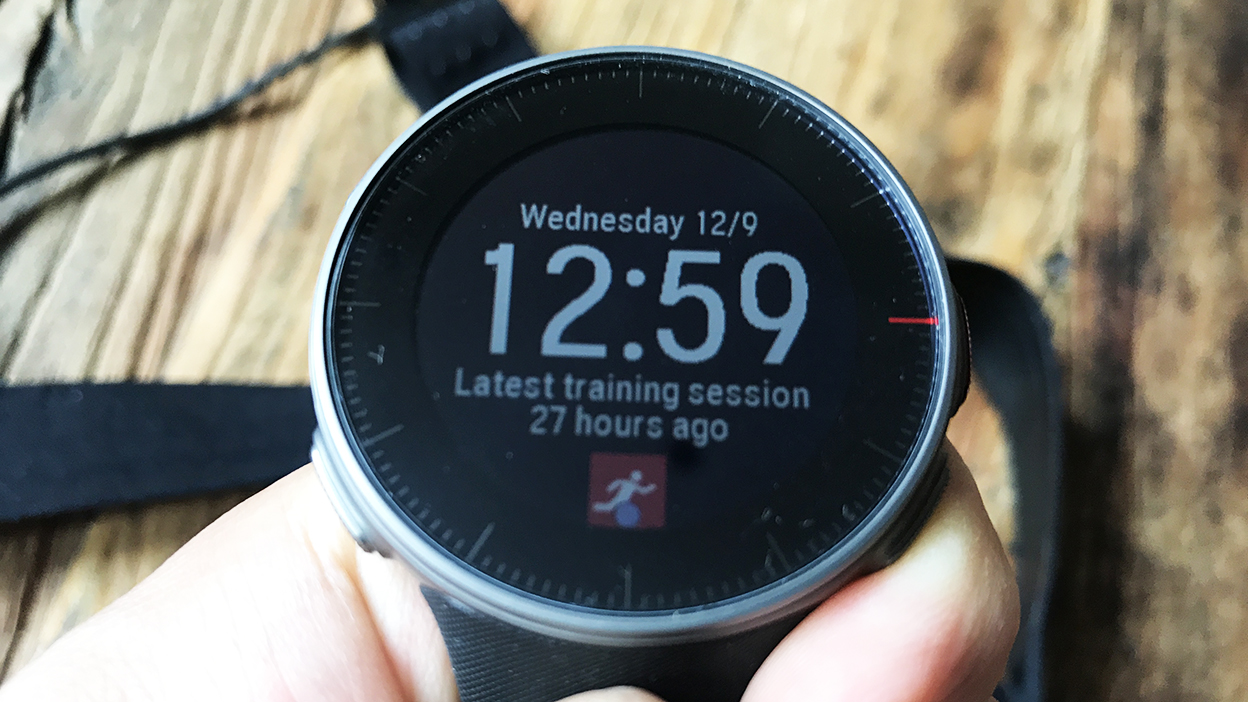
By far Polar’s best looking and most capable watch to date, if you’re serious about your sport and you’re into delving deep into your data in search of improved performance then the Polar Vantage V is an exciting prospect.
There’s a feature set here that’ll give you a near-complete picture, not just of your training sessions but everything that affects how well you train and perform, such as managing training load, recovery and sleep.
For runners the ability to track power – a new way to guide and assess the effectiveness of your training and pace your races better – is a big deal, particularly as it’s done without the need for a foot pod, though we’ll have to see how the accuracy compares to other foot-based products.
0 comments:
Post a Comment